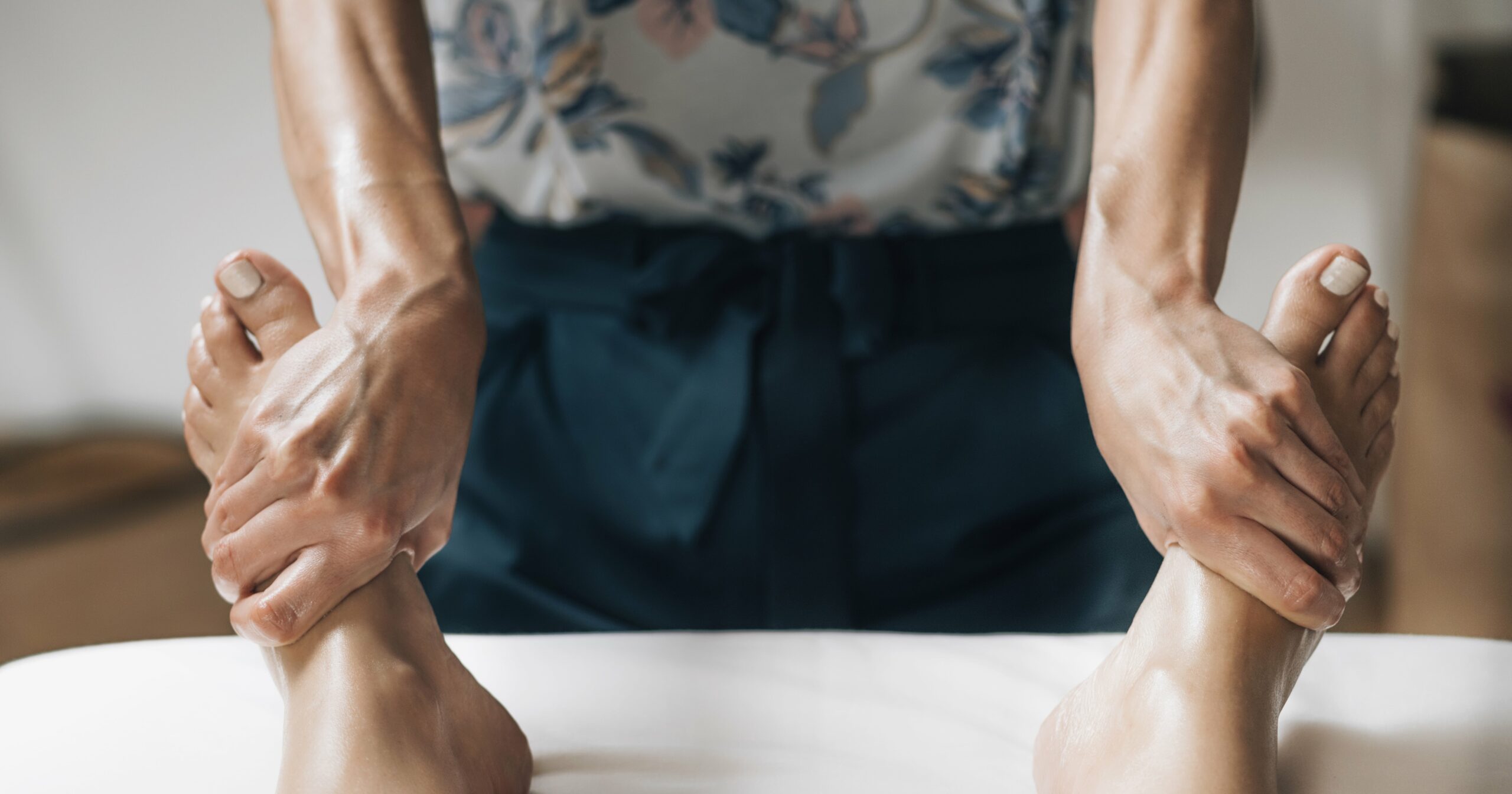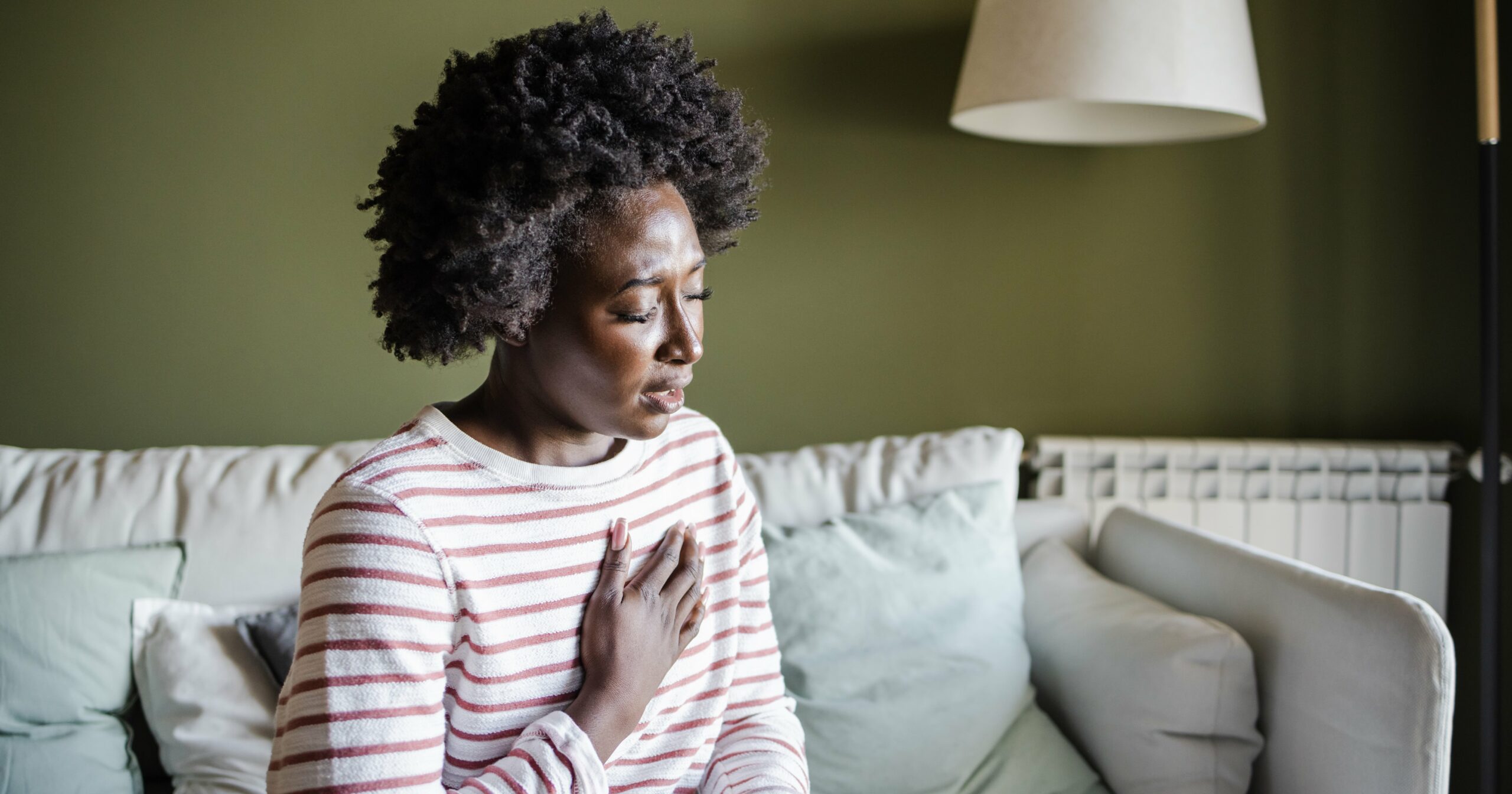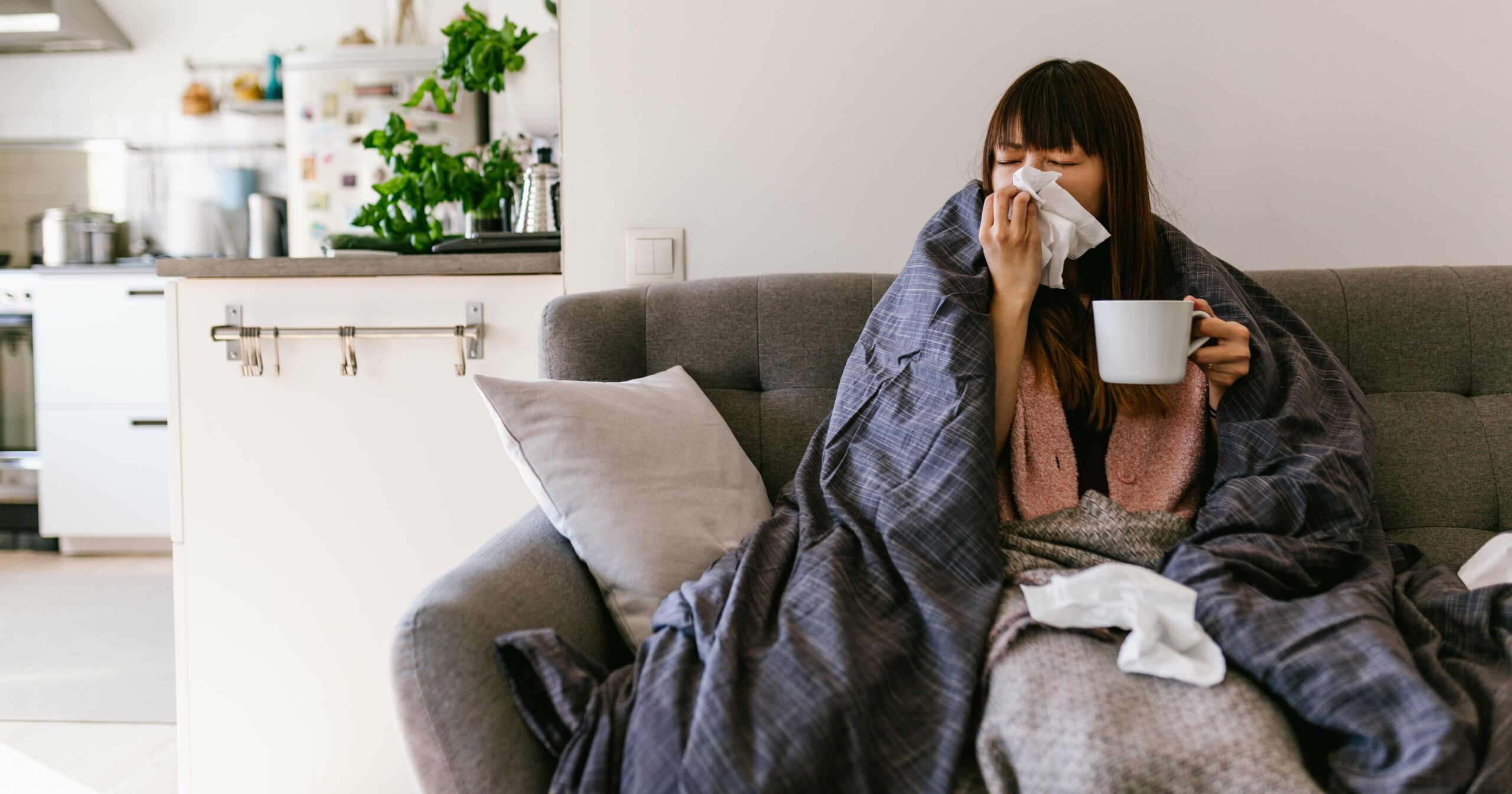Magnesium citrate supplements. Abdominal massage. Homeopathic silica pellets. Senna tea. You name it, I’ve tried it in an attempt to alleviate the bloating, constipation, and other gut issues I’ve been dealing with ever since I developed a digestive disorder called small intestinal bacterial overgrowth (SIBO).
Basically, SIBO happens when excess bacteria build up in the small intestine – and sadly, nothing I’ve tried has offered lasting improvements. Then I stumbled across some promising research about reflexology: A 2020 study showed that people had improved bowel movements and less constipation after just one month of weekly 30-minute reflexology sessions post breakfast. Another small study in women showed that 94 percent of participants reported reduced constipation symptoms following six weeks of reflexology.
So, could reflexology be the breakthrough treatment I’ve been seeking for my gut woes? I decided to find out. Read on for a glimpse into my experience with reflexology, and some details on whether it helped me finally find some relief from my #HotGirlStomachIssues.
Experts Featured in This Story
Erika Martin-Ware is a reflexology practitioner Release Well-Being Center in Boston.
First, What is Reflexology?
If you’re unfamiliar with the concept of reflexology, here’s a quick primer. Reflexology is an alternative medicine practice that entails applying gentle pressure to specific points on the hands, feet, and ears.
“It’s based on the idea that these points correspond to different organs and systems in the body,” says reflexology practitioner Erika Martin-Ware. “By applying pressure to these points, reflexologists aim to promote relaxation, improve circulation, reduce tension, restore balance, and potentially stimulate the body’s natural healing processes. The mechanisms behind reflexology may involve activation of the nervous system, increasing blood flow to specific areas, or enhancing the body’s own self-regulatory processes.”
How Reflexology Works for Digestion
People turn to reflexology for a wide range of reasons, says Martin-Ware, from pain management and insomnia to menstrual cramps and migraine headaches.
In terms of symptoms like bloating and constipation specifically, Martin-Ware says reflexology can help (literally) keep things moving. There are multiple pressure points that are linked to organs involved in digestion, and applying pressure to these points may help to clear blockages and promote regular bowel movements.
But that’s not all: Recent studies have shown that reflexology can also help to reduce stress and anxiety, both of which I’ve long suspected are at the root of my gut issues. (The gut-brain connection is so real.) Researchers think this is because reflexology activates the parasympathetic nervous system, also known as the “rest and digest” response, which helps the body return to a state of relaxation.
For digestive issues like constipation, reflexologists typically focus on the following areas on the feet:
- The “Solar Plexus area” near the ball of the foot: “This is a major nerve center and is thought to help relax the entire digestive system, including the stomach and intestines,” says Martin-Ware.
- The middle arch of the foot: This reflexology point corresponds to the stomach, and according to Martin-Ware, applying pressure here may help alleviate bloating and overall GI discomfort.
- The heel area: “The colon reflex is located along the arch and near the heel of the foot,” says Martin-Ware. “Stimulating this area may encourage bowel movement and help relieve constipation.”
- Near the ball of the foot and upper arch: This is another area of focus because it’s linked to the small and large intestines. Stimulating it can promote healthy digestion and regularity.
My Reflexology Experience
My entire reflexology session lasted one hour, but it honestly flew by; I got so lost in the sensations that it felt more like half of that. After I got situated on the massage table, my reflexology practitioner at the Release Well-Being Center, Marquia McCall, started by asking about my concerns and goals so she could personalize the experience. Fun fact: McCall told me that there are certain pressure points that can actually induce labor, which is why it’s super important to tell your practitioner if you’re pregnant (or if there’s any chance you might be).
Admittedly, I was a little nervous about getting ticklish during a reflexology session. I’m not used to having my feet handled. But to my relief, the pressure was firm enough that it never made me squirm – although McCall did tell me that some clients have actually involuntarily kicked her in a fit of giggles.
All in all, the experience just felt like a deeply relaxing foot massage. First McCall applied what felt like a sugar scrub to my feet, and proceeded to target different areas of my foot and ankle with her fingers in various ways. Then she followed up with a creamy lotion, which seemed to allow for longer strokes. I didn’t want it to end. I felt a sense of warmth, and almost a tingling sensation, radiating from my feet.
After she was done with my feet, McCall moved onto my hands briefly to apply firm yet gentle pressure to several points before ending with the most luxurious head massage for additional stress relief (yes, please). For the last 15 minutes or so, I felt circular strokes all around my scalp, as well as some brief but really pleasant static pressure on the back of my neck.
I was so relaxed at the end of the session that it was actually a little hard to lift my body up. Once I did sit up, I was a tad woozy. McCall told me this was normal and strongly encouraged me to drink plenty of water. Just like a massage, reflexology can mobilize toxins and fluids to be released from your tissues, so it’s important to stay hydrated afterward.
My Results
While driving home from the Release Well-Being Center, I felt like I was floating on a cloud. I wouldn’t say my anxiety and stress totally disappeared, but it definitely seemed like reflexology softened the edges significantly. That night, I slept better than I had in weeks.
Is reflexology a gut cure-all? No, but to expect my symptoms to suddenly disappear after a single hour-long session would be unrealistic. It’s been a full week since my reflexology experience and I’ve noticed that I’m feeling less bloated – particularly in the mornings – and my constipation has improved by about 20 percent. That’s pretty impressive for one session.
Martin-Ware says a lot of people report noticing immediate benefits, although weekly sessions over the course of four to eight weeks are ideal if you’re trying to address an acute health issue. “The full benefits of reflexology, particularly for specific issues like constipation, pain, or chronic conditions, may require a series of sessions to see more lasting or significant results,” Martin-Ware says.
With that in mind, I’m excited to see how my gut issues improve after a few more reflexology appointments. At the very least, I can tell that the treatment is helping me address underlying triggers, like emotional stress and anxiety. Not to mention that it’s a way more pleasant way of improving my gut health than trying to choke down more supplements.
Rebecca Strong is a Boston-based health, wellness, and dating writer with bylines in Insider, Bustle, AskMen, Elite Daily, Eat This Not That, HuffPost, and more.




